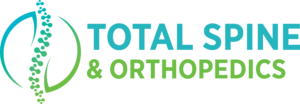Cervical disc herniations occur when the discs in the neck become damaged or displaced, leading to compression of the spinal cord or nerve roots. This condition can cause severe pain and limited mobility, affecting a person's daily activities. In this article, we will discuss the causes, symptoms, and treatment options for cervical disc herniations.
What causes cervical herniated discs to form?
Cervical disc herniations can occur due to various factors such as aging, genetics, or trauma. The discs in the neck are responsible for cushioning the vertebrae and allowing for flexibility and mobility. With age, the discs may begin to degenerate, causing them to lose their elasticity and become more susceptible to herniation. Genetics may also play a role in the development of cervical disc herniations and studies are ongoing to determine the extent genetics may play in disc strength.
Trauma, such as a car accident or fall, can also lead to disc herniations. The impact of the trauma can cause the discs to rupture or become displaced, putting pressure on the spinal cord or nerve roots.
What are the symptoms of cervical disc herniation?
The symptoms of cervical disc herniations can vary depending on the severity and location of the herniation. The most common symptoms include:
- Neck pain
- Arm pain
- Numbness or tingling in the arms or hands
- Weakness in the arms
- Difficulty with fine motor skills, such as buttoning a shirt or holding a pen
In severe cases, cervical disc herniations can also cause bowel or bladder dysfunction and difficulty walking.
What treatments are available for cervical herniated discs?
Treatment options for cervical disc herniations may vary depending on the severity of the condition. In mild cases, rest and physical therapy may be enough to alleviate symptoms. Physical therapy can help to strengthen the muscles in the neck and alleviate pressure on the herniated disc.
In more severe cases, surgery may be necessary. The type of surgery will depend on the location of the herniation and the symptoms experienced. Common surgical options include discectomy, laminectomy, and spinal fusion. Additionally, minimally invasive procedures are available and are highly effective at treating disc herniations of all types.
Can cervical herniated discs be prevented?
While it is not always possible to prevent herniated discs from forming, there are several steps that you can take to help lower your overall risk. These include:
- Maintaining good posture while sitting and standing
- Engaging in regular exercise to strengthen the muscles in the neck and back
- Avoiding activities that put unnecessary strain on the neck, such as carrying heavy bags on one shoulder
- Using proper lifting techniques when lifting heavy objects
Cervical disc herniations can be a painful and debilitating condition that affects a person's daily life. By understanding the causes, symptoms, and treatment options for cervical disc herniations, individuals can take steps to prevent this condition from occurring or seek treatment to alleviate symptoms. If you are experiencing any of the symptoms associated with cervical disc herniations, it is important to speak with a healthcare provider to determine the best course of action.
If you think you may have a cervical herniated disc or are suffering from neck or back pain, Total Spine is here to help. We offer free MRI reviews and quick appointments to get you back to doing what you do best, life! Give us a call today at (321) 499-4646


